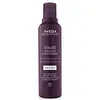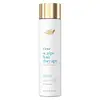What's inside
What's inside
 Key Ingredients
Key Ingredients

 Benefits
Benefits

 Concerns
Concerns

 Ingredients Side-by-side
Ingredients Side-by-side

Water
Skin ConditioningSodium Lauroyl Methyl Isethionate
CleansingSodium Chloride
MaskingMethyl Soyate
EmollientBabassuamidopropyl Betaine
CleansingSodium Methyl Cocoyl Taurate
CleansingCocamide Mipa
EmulsifyingGlycol Distearate
EmollientPropanediol
SolventCurcuma Longa Root Extract
MaskingPanax Ginseng Root Extract
EmollientEmblica Officinalis Fruit Extract
Skin ConditioningLauric Acid
CleansingGlyceryl Caprylate
EmollientLactic Acid
BufferingSodium Laurate
CleansingMethyl Trimethicone
Skin ConditioningArginine
MaskingSalicylic Acid
MaskingAcetyl Carnitine Hcl
Skin ConditioningSodium Gluconate
Skin ConditioningAcrylates/Dimethicone Copolymer
Skin ConditioningGuar Hydroxypropyltrimonium Chloride
Skin ConditioningMalt Extract
Skin ProtectingAdenosine Phosphate
Skin ConditioningCreatine
Skin ConditioningYeast Extract
Skin ConditioningCaffeine
Skin ConditioningDimethicone PEG-8 Polyacrylate
Polyglyceryl-10 Laurate
Skin ConditioningParfum
MaskingLinalool
PerfumingEugenol
PerfumingGeraniol
PerfumingCitronellol
PerfumingCitral
PerfumingBenzyl Benzoate
AntimicrobialLimonene
PerfumingPotassium Sorbate
PreservativePhenoxyethanol
PreservativeWater, Sodium Lauroyl Methyl Isethionate, Sodium Chloride, Methyl Soyate, Babassuamidopropyl Betaine, Sodium Methyl Cocoyl Taurate, Cocamide Mipa, Glycol Distearate, Propanediol, Curcuma Longa Root Extract, Panax Ginseng Root Extract, Emblica Officinalis Fruit Extract, Lauric Acid, Glyceryl Caprylate, Lactic Acid, Sodium Laurate, Methyl Trimethicone, Arginine, Salicylic Acid, Acetyl Carnitine Hcl, Sodium Gluconate, Acrylates/Dimethicone Copolymer, Guar Hydroxypropyltrimonium Chloride, Malt Extract, Adenosine Phosphate, Creatine, Yeast Extract, Caffeine, Dimethicone PEG-8 Polyacrylate, Polyglyceryl-10 Laurate, Parfum, Linalool, Eugenol, Geraniol, Citronellol, Citral, Benzyl Benzoate, Limonene, Potassium Sorbate, Phenoxyethanol
Water
Skin ConditioningSodium C14-16 Olefin Sulfonate
CleansingCocamidopropyl Betaine
CleansingSodium Chloride
MaskingCocamidopropyl Hydroxysultaine
CleansingGlycerin
HumectantSodium Gluconate
Skin ConditioningNiacinamide
SmoothingHydrolyzed Yeast Protein
Skin ConditioningZinc Gluconate
Skin ConditioningTocopheryl Acetate
AntioxidantDimethiconol
EmollientCitric Acid
BufferingParfum
MaskingSodium Benzoate
MaskingCarbomer
Emulsion StabilisingPolyquaternium-7
Guar Hydroxypropyltrimonium Chloride
Skin ConditioningTea-Dodecylbenzenesulfonate
CleansingDisodium EDTA
PPG-9
Skin ConditioningPEG-45m
HumectantHexyl Cinnamal
PerfumingLimonene
PerfumingLinalool
PerfumingWater, Sodium C14-16 Olefin Sulfonate, Cocamidopropyl Betaine, Sodium Chloride, Cocamidopropyl Hydroxysultaine, Glycerin, Sodium Gluconate, Niacinamide, Hydrolyzed Yeast Protein, Zinc Gluconate, Tocopheryl Acetate, Dimethiconol, Citric Acid, Parfum, Sodium Benzoate, Carbomer, Polyquaternium-7, Guar Hydroxypropyltrimonium Chloride, Tea-Dodecylbenzenesulfonate, Disodium EDTA, PPG-9, PEG-45m, Hexyl Cinnamal, Limonene, Linalool
 Reviews
Reviews

Ingredients Explained
These ingredients are found in both products.
Ingredients higher up in an ingredient list are typically present in a larger amount.
This ingredient is derived from guar gum.
It is a conditioning ingredient, meaning it helps soften skin and hair.
Limonene is a fragrance that adds scent and taste to a formulation.
It's found in the peel oil of citrus fruits and other plants such as lavender and eucalyptus. The scent of limonene is generally described as "sweet citrus".
Limonene acts as an antioxidant, meaning it helps neutralize free radicals.
When exposed to air, oxidized limonene may sensitize the skin. Because of this, limonene is often avoided by people with sensitive skin.
The term 'fragrance' is not regulated in many countries. In many cases, it is up to the brand to define this term. For instance, many brands choose to label themselves as "fragrance-free" because they are not using synthetic fragrances. However, their products may still contain ingredients such as essential oils that are considered a fragrance.
Learn more about LimoneneLinalool is a fragrance and helps add scent to products. It's derived from common plants such as cinnamon, mint, citrus, and lavender.
Like Limonene, this ingredient oxidizes when exposed to air. Oxidized linalool can cause allergies and skin sensitivity.
This ingredient has a scent that is floral, spicy tropical, and citrus-like.
Learn more about LinaloolParfum is a catch-all term for an ingredient or more that is used to give a scent to products.
Also called "fragrance", this ingredient can be a blend of hundreds of chemicals or plant oils. This means every product with "fragrance" or "parfum" in the ingredients list is a different mixture.
For instance, Habanolide is a proprietary trade name for a specific aroma chemical. When used as a fragrance ingredient in cosmetics, most aroma chemicals fall under the broad labeling category of “FRAGRANCE” or “PARFUM” according to EU and US regulations.
The term 'parfum' or 'fragrance' is not regulated in many countries. In many cases, it is up to the brand to define this term.
For instance, many brands choose to label themselves as "fragrance-free" because they are not using synthetic fragrances. However, their products may still contain ingredients such as essential oils that are considered a fragrance by INCI standards.
One example is Calendula flower extract. Calendula is an essential oil that still imparts a scent or 'fragrance'.
Depending on the blend, the ingredients in the mixture can cause allergies and sensitivities on the skin. Some ingredients that are known EU allergens include linalool and citronellol.
Parfum can also be used to mask or cover an unpleasant scent.
The bottom line is: not all fragrances/parfum/ingredients are created equally. If you are worried about fragrances, we recommend taking a closer look at an ingredient. And of course, we always recommend speaking with a professional.
Learn more about ParfumChances are, you eat sodium chloride every day. Sodium Chloride is also known as table salt.
This ingredient has many purposes in skincare: thickener, emulsifier, and exfoliator.
You'll most likely find this ingredient in cleansers where it is used to create a gel-like texture. As an emulsifier, it also prevents ingredients from separating.
There is much debate on whether this ingredient is comedogenic. The short answer - comedogenic ratings don't tell the whole story. Learn more about comegodenic ratings here.
The concensus about this ingredient causing acne seems to be divided. Research is needed to understand if this ingredient does cause acne.
Scrubs may use salt as the primary exfoliating ingredient.
Learn more about Sodium ChlorideThis is the synthetic salt of gluconic acid, a form of PHA and mild exfoliant.
It is mainly used to stabilize oil and butter formulations from going bad. Sodium gluconate is a humectant, pH regulator, and chelating agent.
Chelating agents help neutralize unwanted metals from affecting the formulation.
Sodium gluconate is water-soluble.
Learn more about Sodium GluconateWater. It's the most common cosmetic ingredient of all. You'll usually see it at the top of ingredient lists, meaning that it makes up the largest part of the product.
So why is it so popular? Water most often acts as a solvent - this means that it helps dissolve other ingredients into the formulation.
You'll also recognize water as that liquid we all need to stay alive. If you see this, drink a glass of water. Stay hydrated!
Learn more about Water